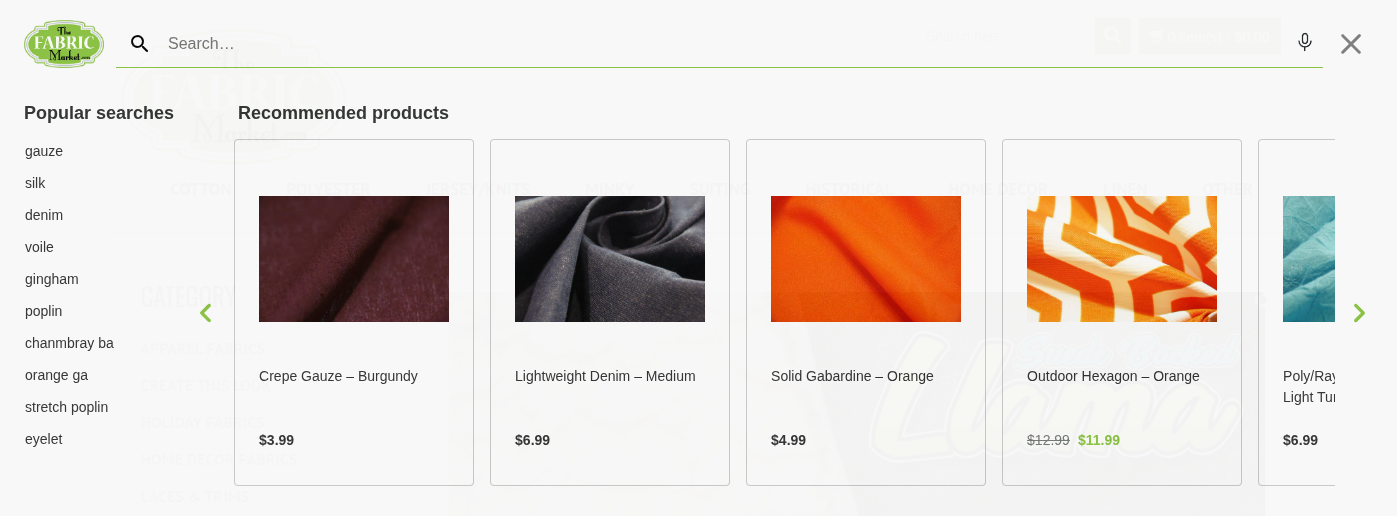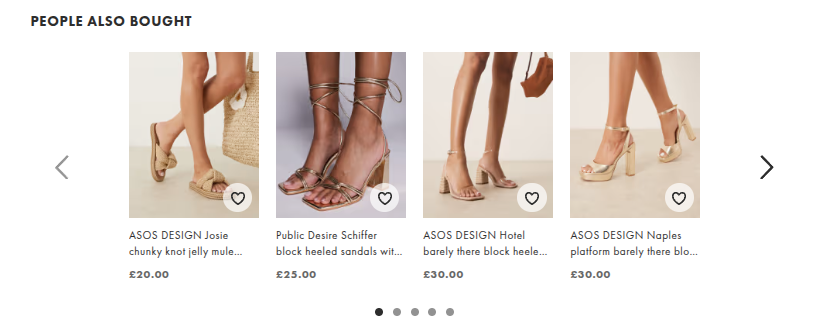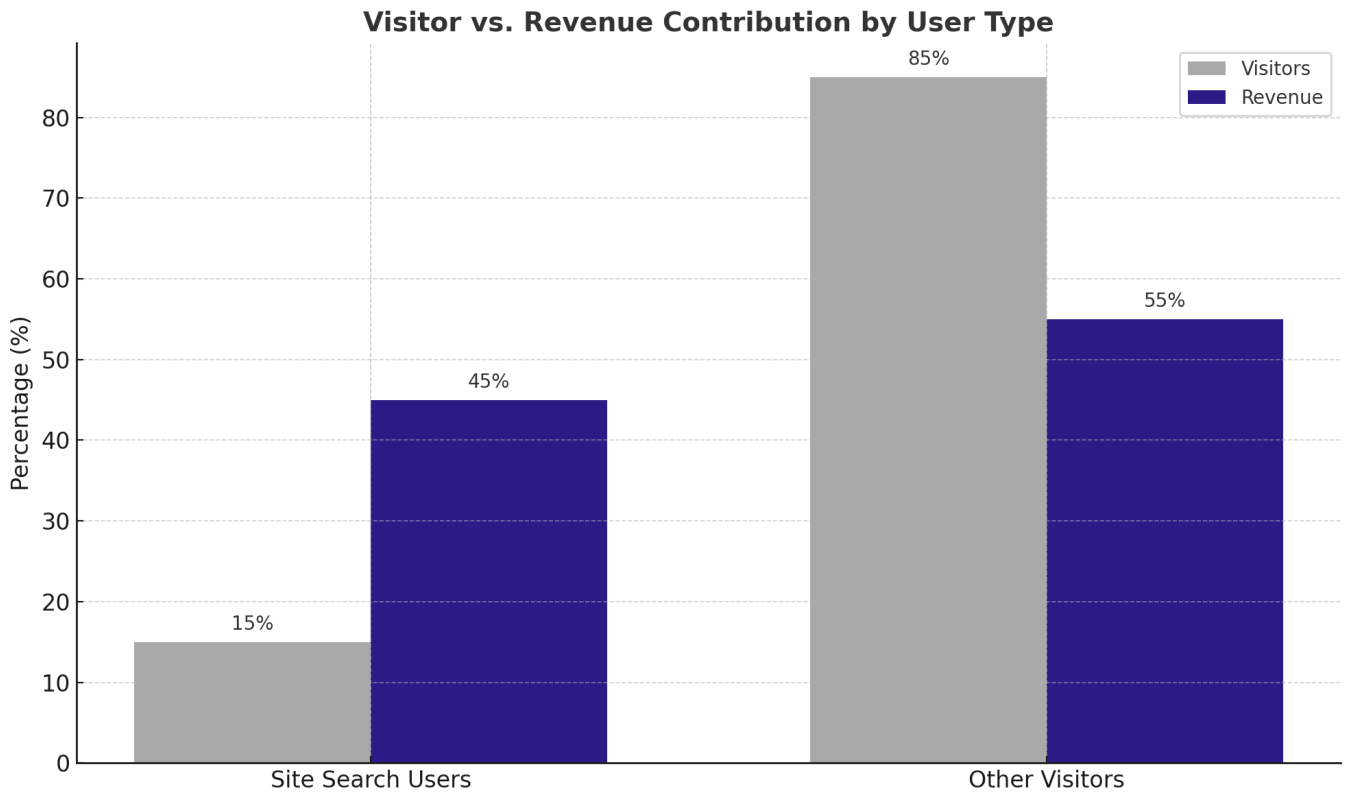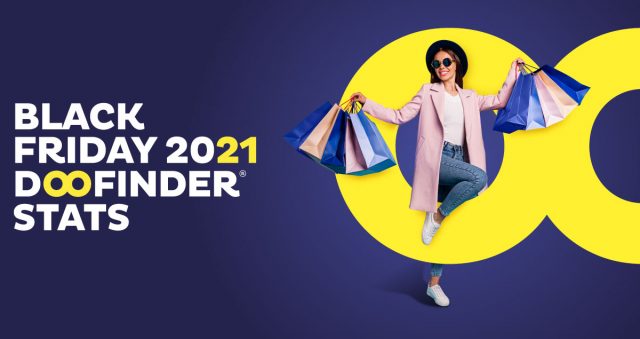eCommerce merchandising isn’t just about putting products online anymore. It’s now a data-driven approach that shapes how people shop, what they see, and whether they make a purchase. Just like in a physical store, presentation matters, but online, you have far more flexibility and options to make it work.
Without the limits of shelf space or fixed layouts, online merchandising gives you full control over how products are displayed, organized, and promoted. Whether you want to increase conversions, boost average order value, or lower bounce rates, it all starts with having the right merchandising strategy in place.
In this article, we’ll break down what eCommerce merchandising really means, how it’s different from traditional in-store displays, and why it plays a key role in your online success. We’ll also guide you through how to build a strong merchandising strategy step by step, and share proven, practical tips you can start using right away.
Let’s explore how smart eCommerce merchandising can turn more browsers into buyers, and help your store perform at its best!

What is Merchandising in eCommerce?
Think of eCommerce merchandising as the digital version of a great in-store experience, but smarter and scalable. It’s not just about listing your products; it’s about how you present, prioritize, and guide your visitors toward the right purchase.
In a physical store, you might walk past a well-designed display: a jacket paired with matching shoes and a callout for “Limited Stock.” That’s classic merchandising. Online, you have even more control—because every pixel, placement, and recommendation can be adapted in real time.
eCommerce merchandising includes:
- Deciding which products show up first in a search
- Highlighting promotions or bestsellers in the right place
- Suggesting related items or bundles
- Structuring navigation so people don’t get lost
At its core, merchandising in eCommerce is about connecting the right product to the right person at the right time—and making that path feel effortless.
How does eCommerce Merchandising differ from Traditional Merchandising?
Traditional merchandising is limited by space. You can only display so much on a shelf, and making changes—like reworking a product display or testing a new layout—takes time, money, and manpower.
Online, it’s a whole different game.
Online merchandising gives you the freedom to adapt instantly. You’re not bound by aisles or endcaps. Instead, you control everything your customer sees, from product placement and filtering to banners and recommendations, on any device, at any time.
Here’s how it stands apart:
- Unlimited shelf space: Feature as many products, pairings, or promos as you want—without needing a bigger store.
- Personalization at scale: Customize what each visitor sees based on their behavior, preferences, or even location.
- Faster iteration: Test what works and optimize on the in the moment, no physical resets needed.
- Data-driven insight: Every click, scroll, and search gives you feedback you can act on right away.
In short, traditional merchandising sets the stage. eCommerce merchandising lets you rewrite the script… for every single customer.
Good to Know: Studies show that brands with well-optimized digital merchandising strategies see conversion rate increases of 20–50% compared to those that don’t.
Why is eCommerce Merchandising important?
Because great products alone aren’t enough anymore.
If your customers can’t find what they’re looking for, or worse, if they have never even seen it, you’re losing revenue. eCommerce merchandising bridges that gap. It helps you surface the right products, guide shoppers through their journey, and boost the chances they’ll click “buy now.”
And the numbers back it up.
It also plays a key role in:
- Increasing average order value (through upselling and cross-selling)
- Reducing bounce rates
- Improving user experience across devices
- Making better use of high-intent traffic (like search users)
Bottom line? Merchandising isn’t just about how your store looks—it’s about how it performs.
How to Build an Effective eCommerce Merchandising Strategy
A strong ecommerce merchandising strategy begins with aligning product presentation to business goals and customer behavior. Whether you’re a growing brand or an established store looking to optimize, a strong strategy gives your merchandising real purpose.
Here’s six steps to how to build one that actually delivers:
1. Define Your Business Goals
What exactly do you want your merchandising to achieve?
Are you focused on increasing conversions? Raising your average order value? Moving seasonal inventory? Each of these goals requires a different approach, and the wrong tactics can waste time and confuse your users.
For example, if your priority is improving AOV, your merchandising should lean into upsells, product bundles, and smart recommendations. If you’re trying to drive more engagement on new collections, that means front-loading fresh arrivals and optimizing your homepage layout.
Clear goals act like a roadmap. They guide your creative decisions so every move takes you closer to real results.
2. Understand Your Customers
You can’t build an effective strategy if you don’t understand who you’re designing for.
Use tools like Google Analytics, heatmaps, and behavior tracking to segment your customers by key traits: device, traffic source, browsing habits, purchase history, and more. If you have a CRM or loyalty program, dig into that data too.
Ask yourself:
- What are they searching for?
- What’s stopping them from converting?
- Are there clear differences between desktop vs. mobile behavior?
The better you understand your customers’ preferences and patterns, the better you can guide them through your site with the right product placements, offers, and filters.
3. Identify Friction & Opportunities
Now that you know your goals and your audience, zoom in on what’s not working.
Where do users drop off in the journey? Which pages have high bounce rates but low conversion? Which high-margin products aren’t getting attention?
This is where site analytics become your best friend. Your merchandising strategy should aim to remove friction—whether it’s confusing navigation, irrelevant filters, or a homepage that buries your bestsellers. But it should also highlight opportunities. Are users constantly searching for something you don’t feature? That’s a merchandising win waiting to happen.
Turn those weak spots into launch points for your strategy.
Do you want to understand your customers better? Check out how to map the customer journey to well identify friction points.
4. Choose the Right Focus Areas
Based on your goals and customer behavior, decide where merchandising can have the most impact. For example:
- If people browse a lot but don’t end up buying, focus on showing value more clearly.
- If shoppers get confused or can’t find what they need, it might be time to simplify your site’s navigation.
- If your high-profit products aren’t getting enough attention, find better ways to feature them.
This is where you begin mapping out which merchandising strategies to implement, but the groundwork has to come first.

Pro Tip: Want to give your products more visibility? Add a “Recommended Products” section to your search results—just like The Fabric Market does. Tools like Doofinder make it easy to implement.
5. Map Out Strategic Tactics
Once you’ve chosen your focus areas, define what merchandising tools or tactics will support your goals. Will you use AI-powered recommendations? Implement badges like “Trending” or “Low Stock”? Restructure your filters and search logic?
Importantly, plan how you’ll test and measure each tactic. If something improves click-through rates or drives higher AOV, scale it. If it doesn’t move the needle, iterate.
Your merchandising strategy should never be a one-and-done checklist—it should evolve as your store, your customers, and your data change.

Our Top 5 eCommerce Merchandising Best Practices
What makes eCommerce merchandising so powerful is how different it is from traditional retail. With digital tools and data on your side, you’re not limited by shelf space or fixed displays. Instead, you can create flexible, personalized shopping experiences that drive more sales and keep customers happy.
Here are five best practices that leverage the unique strengths of online retail:
1. Leverage Unlimited Product Placement
In a physical store, space is your biggest constraint. You can only feature so many items at once. Want to show how well a backpack pairs with a jacket and a pair of boots? Good luck finding the shelf space—let alone updating it in real time.
Online, those limits don’t exist.
With eCommerce merchandising, your “shelf” is flexible. You can promote any product, in any combination, across any part of the site—homepage, category page, product detail page, cart, checkout, even confirmation emails. This becomes evident by all the different product listing page examples that exist.
That opens up huge opportunities for cross-selling and upselling.
Upselling techniques can lead to an average order value (AOV) increase of 10–30%. (Source: BigCommerce)
2. Implement Dynamic Personalization
One of the biggest advantages of online merchandising over traditional retail is the ability to personalize the shopping experience in real time. Dynamic personalization uses data—such as browsing history, location, device type, and purchase behavior—to tailor what each visitor sees. This isn’t just a “nice-to-have”; it has a real impact.
According to WiserNotify, personalized product recommendations can increase conversion rates by up to 288%, while Barilliance reports that sessions involving personalized recommendations generate up to 369% higher average order value (AOV) compared to non-personalized ones.
Even a single personalized interaction can make a difference. Showing users items based on previous visits or cart activity has been shown to reduce bounce rates and increase time on site. By leveraging dynamic personalization, eCommerce brands create shopping experiences that feel relevant and intuitive, ultimately leading to more purchases and higher customer satisfaction.
Personalization will also be hugely affected by the implementation of AI. Read all about how AI will transform retail.
You don’t need a history with a customer to personalize their customer journey.
Look at how ASOS uses data from other customers to guide first-time visitors. Their “People also bought” section doesn’t rely on knowing anything about you—it taps into broader buying behavior to suggest relevant add-ons and complete-the-look pairings. Even without personal data, they’re cross-selling strategically from the start.
Unlimited placement also makes it easier to:
- Highlight new arrivals or seasonal promotions
- Create curated experiences for specific campaigns
- Reposition underperforming products in better contexts

3. Continuously Test and Optimize
One of the biggest perks of running an eCommerce store? You don’t have to guess what works, you can test it.
- Simply changing the color or text of a CTA button can increase click-through rates by up to 90%. (Source: HubSpot)
A/B testing (also called split testing) lets you compare two versions of a page element—like a product title, banner, CTA button, or layout—to see which one performs better. And unlike physical retail, where changing a display takes time and effort, online tests can run instantly, with results in days.
There’s a huge amount of characteristics you can A/B test: Product order on a category pageDifferent hero banners on the homepageCross-sell placements in the cartPromotional copy or discount languageFilters and sorting logic in search
A/B testing is essential for refining your merchandising strategy. Test all of the above to see what drives results.
4. Optimize Site Search for Conversions
If your visitors are using your search bar, they’re telling you exactly what they want. That’s not just helpful, it’s golden.
But here’s the problem: too many eCommerce stores treat site search like a basic utility instead of the conversion engine it can be.
💡 Site search users make up just 15% of total traffic but generate 45% of total revenue (Source: AddSearch).

But here’s the catch: standard search bars just don’t cut it anymore. They return irrelevant results, can’t handle typos, and miss the intent behind vague queries. That’s where smart site search comes in—and why tools like Doofinder make such a difference.
What makes site search “smart”?
- Autocomplete & suggestions: Help users get to products faster
- Error tolerance: Don’t punish typos or vague terms
- Filters & faceted navigation: Let users refine results easily
- Personalization: Tailor results based on behavior or location
- Synonym recognition: Understand what people mean, not just what they type
Beyond conversions, optimizing search also improves UX. It reduces friction, increases time on site, and gives you rich data on what users are actually looking for, which you can use to improve your merchandising elsewhere. More about this in our article on searchandising.
In short: your search bar isn’t a box. It’s one of the most valuable sales tools on your site.
🔍 Ready to turn your search bar into a sales machine? Try Doofinder free for 30 days and see how smart site search can boost your conversions—no coding, no commitment.

5. Make Accessibility a Priority
A great product page doesn’t mean much if not everyone can use it.
Accessibility in eCommerce isn’t just about compliance, it’s about removing barriers so every shopper, on any device, can navigate your store and make a purchase. And yes, it’s also good for business.
Did you know that? Over 1 billion people worldwide live with some form of disability. That’s a market you can’t afford to overlook.
Accessible merchandising means:
- Clear typography and proper contrast
- Alt text on all images and banners
- Keyboard navigation support
- Logical heading structures and readable content
- Avoiding over-reliance on hover effects or motion-only interactions
And here’s the upside: when you design for accessibility, you often improve the experience for everyone. Clean layouts, descriptive CTAs, and better performance benefit all users—not just those with impairments.
Need help getting started? Tools like WAVE or axe DevTools can scan your site for quick wins. And if you’re using smart search platforms like Doofinder, you’ll already benefit from accessibility-friendly features out of the box.
In short: make it easy for everyone to shop. The returns will speak for themselves.

Check this out: Caperfume’s search box isn’t just smart—it’s inclusive. With image and voice search built in, it makes finding products faster, easier, and far more accessible for every shopper.
eCommerce Merchandising That Converts
Great merchandising doesn’t just happen, it’s built. And as you’ve seen, eCommerce merchandising is about much more than nice visuals or clever copy. It’s a strategic toolkit that directly impacts what your customers discover, how they engage, and whether they will eventually click “Add to Cart.”
From unlimited product placement to dynamic personalization, from smart A/B testing to powerful on-site search, each element works together to build a store that not only looks good but sells better.
With a clear ecommerce merchandising strategy, you can turn casual browsers into loyal customers, while boosting revenue along the way.
Want a quick win to kick things off? 💡 Start with your search bar. It’s one of the highest-intent touchpoints on your site—and one of the easiest ways to improve conversions fast.
Try Doofinder free for 30 days, and turn your search into a merchandising powerhouse—no coding required, no commitment needed. Just faster discovery, better UX, and a meaningful boost in revenue.








